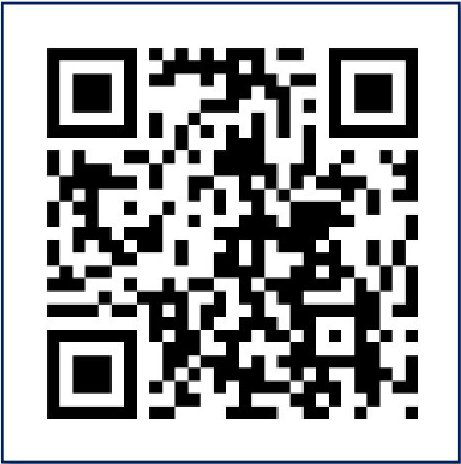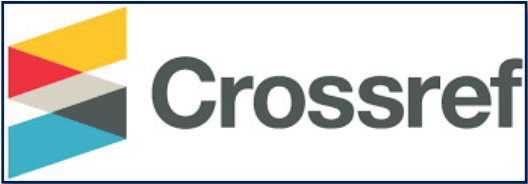Isolasi dan Uji Aktivitas Antagonisme Jamur Endofit Tanaman Pisang (Musa paradisiaca L.) terhadap Fusarium oxysporum
DOI:
https://doi.org/10.33394/bioscientist.v10i1.4718Keywords:
Endophytic Fungus, Fusarium oxysporum, Musa paradisiaca L.Abstract
References
Amaria, W., Harni, R., dan Samsudin. (2015). Evaluasi Jamur Antagonis dalam Menghambat Pertumbuhan Rigidoporus microporus Penyebab Penyakit Jamur Akar Putih pada Tanaman Karet. Jurnal Tanaman Industri dan Penyegar, 2(1), 51-60.
Amin, N. (2016). Endophytic Fungi to Control of Cocoa Pod Borer (Conopomorpha cramerella) on Cocoa Plantation. Research Journal of Pharmaceutical, Biological and Chemical Sciences, 7(6), 1496-1501.
Dwiastuti, M.E., Fajri, M.N., dan Yunimar. (2015). Potensi Trichoderma spp. sebagai Agens Pengendali Fusarium spp. Penyebab Penyakit Layu pada Tanaman Stroberi (Fragaria x ananassa Dutch.). J. Hort, 25(4), 331-339.
Fontana, D.C., de Paula, S., Torres, A.G., de Souza, V.H.M., Pascholati, S.F., Schmidt, D., and Neto, D.D. (2021). Endophytic Fungi: Biological Control and Induced Resistance to Phytopathogens and Abiotic Stresses. Pathogens, 10(5), 1-28.
Halwiyah, N., Ferniah, R.S., Raharjo, B., dan Purwantisari, S. (2019). Uji Antagonisme Jamur Patogen Fusarium solani Penyebab Penyakit Layu pada Tanaman Cabai dengan Menggunakan Beauveria bassiana Secara In Vitro. Jurnal Akademika Biologi, 8(2), 8-17.
Hamzah, T.N.T., Lee, S.Y., Hidayat, A., Terhem, R., Faridah-Hanum, I., and Mohamed, R. (2018). Diversity and Characterization of Endophytic Fungi Isolated from the Tropical Mangrove Species, Rhizophora mucronata, and Identification of Potential Antagonists Against the Soil-Borne Fungus, Fusarium solani. Frontiers in Microbiology, 9(1), 1-17.
Hasiani, V.V., Islamudin, A., dan Laode, R. (2015). Isolasi Jamur Endofit dan Produksi Metabolit Sekunder Antioksidan dari Daun Pacar (Lawsonia inermis L.). Jurnal Sains dan Kesehatan, 1(4), 146-153.
Izzatinnisa, Utami, U., dan Mujahidin, A. (2020). Uji Antagonisme Beberapa Fungi Endofit pada Tanaman Kentang terhadap Fusarium oxysporum secara In Vitro. Jurnal Riset Biologi dan Aplikasinya, 2(1), 18-25.
Kaur, T. (2020). Fungal Endophyte-Host Plant Interactions: Role in Sustainable Agriculture, Sustainable Crop Production, Mirza Hasanuzzaman, Marcelo Carvalho Minhoto Teixeira Filho, Masayuki Fujita and Thiago Assis Rodrigues Nogueira, IntechOpen.
Kristiawati, Y., Sumardiyono, C., dan Wibowo, A. (2014). Uji Pengendalian Penyakit Layu Fusarium Pisang (Fusarium oxsporum f.sp. cubense) dengan Asam Fosfit dan Alumunium-Fosetil. Jurnal Perlindungan Tanaman Indonesia, 8(2), 103-110.
Landum, M.C., Felix, M.D.R., Alho, R., Garcia, R., Cabrita, M.J., Rei, F., and Varanda, C.M.R. (2016). Antagonistic Activity of Fungi of Olea europaea L. Against Collectotrichum acutatum. Microbiological Research, 183, 100-108.
Nuraini, F.R., Setyaningsih, R., dan Susilowati, A. (2017). Screening and Characterization of Endophytic Fungi as Antagonistic Agents Toward Fusarium oxysporum on Eggplant (Solanum melongena). Biodiversitas Journal of Biological Diversity, 18(4), 1377-1384.
Orlandelli, R.C., de Almeida, T.T., Alberto, R.N., Polonio, J.C., Azevedo, J.L., and Pamphile, J.A. (2015). Antifungal and Proteolytic Activities of Endophytic Fungi Isolated from Piper hispidum Sw. Brazilian Journal of Microbiology, 46(2), 359-366.
Rabha, A.J., Naglot, A., Sharma, G.D., Gogoi, H.K., and Veer, V. (2014). In Vitro Evaluation of Antagonism of Endophytic Colletotrichum gloeosporioides Against Potent Fungal Patogens of Camellia sinensis. Indian J. Microbiol, 54(3), 302-309.
Ratnasari, J.D., Isnawati, dan Ratnasari, E. (2014). Uji Antagonis Cendawan Agens Hayati terhadap Cendawan Cercospora musae Penyebab Penyakit Sigatoka Secara In Vitro. LenteraBio, 3(2), 129-135.
Sari, W., dan Setiawanto, E. (2015). Potensi Cendawan Rhizosfer Pisang sebagai Agen Hayati terhadap Cendawan Fusarium oxysporum f.sp. cubense Penyebab Penyakit Layu pada Pisang. Jurnal Agroscience, 5(2), 37-42.
Srujianto. (2013). Efektivitas Formulasi Bacillus subtilis dan Pseudomonas flurescens untuk Mengendalikan Penyakit Layu Fusarium pada Tanaman Pisang (Musa balbisiana cv. Kepok). Skripsi. Universitas Jember.
Venkatesh, Krishna, V., Pradeepa, K., Santosh, K.S.R., Nagaraja, D., Mohan, K.S.P., and Santhosh, K.J.U. (2014). Identification and Characterization of Panaman Wilt Causing Fungal Isolates to Musa Paradisiaca cv. Puttabale. International Journal of Applied Science and Biotechnologi (IJASBT), 2(4), 420-425.
Waruwu, A.A.S., Bonny, P.W.S.W., dan Abdul, M. (2016). Metabolit Cendawan Endofit Tanaman Padi sebagai Alternatif Pengendalian Cendawan Patogen Terbawa Benih Padi. Jurnal Fitopatologi Indonesia, 12(2), 53-61.
Watanabe, T. (2010). Pictorial Atlas of Soil and Seed Fungi: Morphologies of Cultured Fungi and Key to Species. Third Edition. Boca Raton: CRC Press.
Widi, A., Rita, H., dan Samsudin. (2015). Evaluasi Jamur Antagonis dalam Menghambat Pertumbuhan Rigidoporus microporus Penyebab Penyakit Jamur Akar Putih pada Tanaman Karet. Jurnal Tanaman Industri dan Penyegar, 2(1), 51-60.













